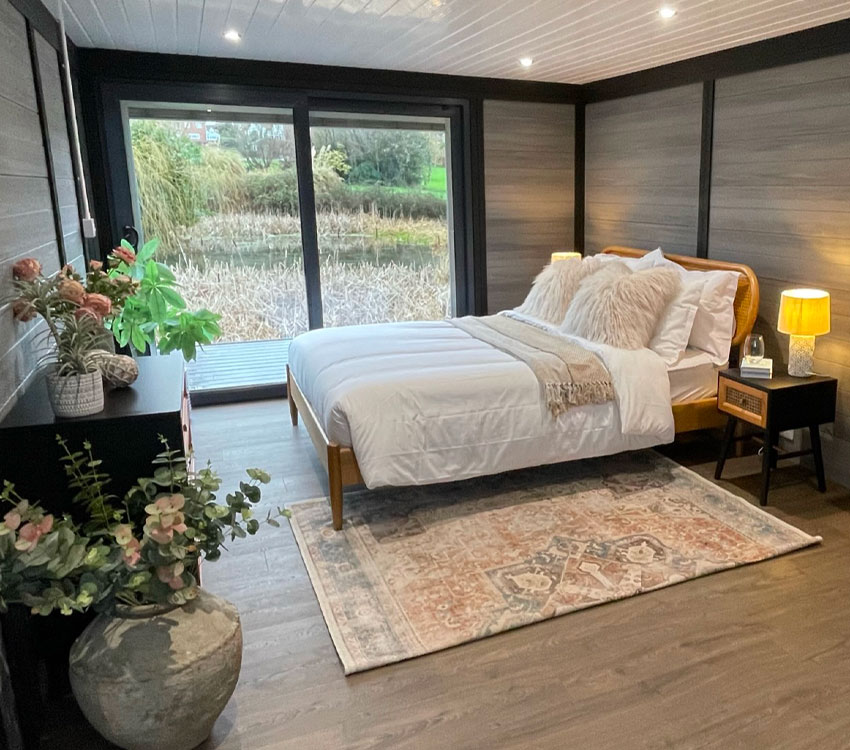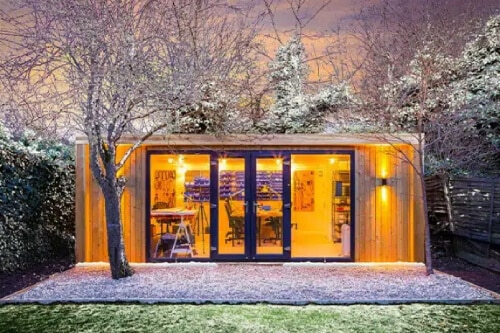New Tips For Planning Permission On Garden Rooms
New Tips For Planning Permission On Garden Rooms
Blog Article
What Planning Permission Is Required For Garden Rooms Etc In Regards To Highways?
When considering the construction of garden rooms, conservatories and outhouses as well as extensions or gardens offices, traffic issues are one aspect that could affect the need for planning permission. Here are the main concerns: Visibility and Sight Lines
Planning permission is required if the structure impacts drivers' sightlines or intersections at bends or junctions of the road. The planning authority determines if the building is a danger for road safety.
Proximity to the Highway:
Typically, structures that are constructed close to highways, such as extensions or front garden rooms close to streets need approval from the planning department. There are particular distance restrictions to ensure the building does not interfere with the safety of the highway.
Access and Egress
Planning permission is needed for any changes to points of access. This could include the creation of new driveways or altering the existing ones to allow for an entirely new design. This is to ensure the access and exit points are safe for vehicles and do not cause any disruption.
Parking:
Planning permission could be required if a new structure affects existing parking spaces or demands additional parking. The planning authority evaluates whether or not the proposed development provides enough parking, and if it does not create parking congestion on streets.
Traffic Generation
Planning permission is required to permit any development anticipated to increase traffic like the use of a garden office by a business that has clients who are visiting. The impact on local traffic volumes and road safety will be assessed.
Impact on Pedestrian Access
Planning permission will be required in the event that the proposed structure will be intruding on pedestrian walkways or pavements. The safety of pedestrians as well as ensuring that they can still get to the site is of paramount importance.
Construction Impact on Highways
A permit for planning may be required to mitigate the impact of highway construction, such as high traffic volumes as well as temporary obstacles. The planning authority can impose conditions that will minimize the disruption to the road network when construction takes place.
Drainage & Water Runoff
The effect of the development on drainage and runoff, specifically how it affects the road is another factor to consider. The proposed structure has to be accepted by the planning authority to avoid drainage problems and flooding in the roadway.
Street Furniture and Utilities
Planning permits are required for any proposed building that could impact street furniture, such as lampposts, signs, or underground utilities such as electric cables and water pipes. The Planning authority will collaborate with the relevant agencies to resolve any concerns.
Highway Authority Guidelines
Local highway authorities might have specific guidelines or requirements for developments close to highways. Planning permissions will ensure that these regulations are adhered to in order to maintain the efficiency of roads and ensure safety.
Noise and disturbances from traffic
Planning permission is required for any new structure that will cause more disturbance and noise to traffic (e.g. an office in the garden that receives deliveries or visitors).
Accessibility to public transport
The planning permission must be obtained when the project could be detrimental to infrastructure for public transport, such as bus stops and train stations. Effects on users of public transport and the integration into the transport system will be considered.
Highway safety is a major factor in determining whether an extension, conservatory, garden room, outhouse, garden office or extension is accepted. It is crucial to ensure that any proposed construction will not adversely impact road safety traffic flow, pedestrian safety or access. Early consultation with the local highway authority as well as the planning authority is a good way to resolve these issues and ensure that the development is in compliance with relevant regulations. View the most popular garden room wiring diagram for website recommendations including conservatories and garden rooms, garden office electrics, how to get power to a garden room, what size garden room without planning permission, garden rooms near me, herts garden rooms, ground screws vs concrete, outhouses, garden office electrics, ground screws vs concrete base and more.
What Is The Planning Permission Required For Gardens, Etc.?
If you are planning to build conservatories or garden rooms, outhouses or garden offices on the property of a listed building There are specific considerations that must be taken into account. These are the most crucial factors to be aware of when applying for planning permission.
In addition to the need for the planning approval, any alteration or extension within the boundaries of an historic building will require listed-building consent. This is due to the fact that any modifications could affect the character or special interest of a listed building.
Influence on Historical Character:
An application for planning is required for any structure or extension that could change the historic character of the listed property or its location. This includes garden structures as well as outbuildings.
Materials and Design
The structure as well as its materials must respect the architectural and historical importance of the listed building. Planning permission is required if the design and materials are not traditional.
Close proximity to the listed building
New structures built close to the listed building are inspected for their effect on the setting and appearance of the heritage asset. If they don't affect the building’s character Planning permission is required to be obtained.
Size and Scale
The dimensions and size of the proposed garden room, conservatory, or extension should be appropriate and sympathetic to the existing structure. Planning permission and specific evaluations are more likely for larger structures.
The Property Location:
The position of the new structure (whether to the front, side, or back of the listed building) may affect the requirement for planning permission. The visible locations, or those that impact key views of the structure need to be evaluated more thoroughly.
Modifications to the Internal Structure
Even if a new structure has been detached the internal modifications (such the creation of new access routes) to the property require both approved building permits as well as planning permission.
Conservation Area Overlap
The listed building should also be located within a Conservation Area. Planning permits are required to ensure compliance with both listed building and conservation area regulations.
The use of the building:
The purpose of the garden room or outbuilding could influence the requirement to obtain planning permission. Any uses that require a substantial change, such as residential accommodation or commercial use will be subject to more careful examination.
Structural Impact
The listed building consent as well as planning permission are required for any construction that might affect the structural integrity of the building. This will ensure that older and new structures can be properly integrated.
Local Authority Guidelines:
Local authorities often offer specific guidelines for listed buildings which outline the types of construction and modifications that are allowed. These guidelines must be followed with planning permission.
Professional Assessments
Conservation professionals are often required to conduct thorough analyses for plans of projects on properties that are listed. These assessments aid in determining the appropriateness of the proposed changes and also support the application for planning permission.
As a summary In general, it is necessary to obtain planning permission and a listed construction consent when constructing extensions, garden rooms or conservatories and outhouses as well as conservatories attached to listed structures. Get in touch with your local planner and heritage experts very early on in the process of planning to ensure compliance to the relevant regulations as well as to protect the architectural and historical integrity. Check out the best outhouse ideas uk for more recommendations including composite garden office, garden rooms, garden room planning permission, garden office, outhouses, garden buildings , costco outhouse, garden room, costco outbuildings, garden outhouse and more.
What Planning Permission Is Required For Garden Rooms, Etc. In Terms Of Utilities And Infrastructure
If you are planning to build an outdoor space, conservatory, outhouses (garden offices), or an extension the utility and infrastructure aspects will be crucial. This will affect the necessity for a permit to plan. Here are some key considerations water supply and drainage
If the building being constructed requires connections to drainage or water supply systems, a planning approval might be needed. Local water authorities may be required to consider any impact on the local water and sewage systems.
Gas Connections and Electricity Connections
If the proposed structure will require connection to gas and electricity, a planning approval may be needed. It is crucial that the connections are in compliance with the safety standards and building regulations.
Utility Easements
Planning permission may be required if the proposed structure is in an area designated for utilities and infrastructure. Local utility providers may have to approve any project in these areas.
Septic Tanks and Sewage Systems
Planning permission is needed for any new construction that requires an on-site septic tank or sewage treatment system. Compliance with environmental regulations and health standards is vital for these systems.
Drainage, Surface Water Management and Surface Water Management
You might need approval for drainage plans and runoff from surface waters. It could be necessary to implement measures to avoid flooding, erosion and water pollution.
Access to Utilities for Construction
Planning permission might be needed in the event that temporary utilities are needed (such as water for building). The temporary connection has to meet safety and environmental standards.
Impact on Local infrastructure
It is important to get permission for planning so that you can determine the impact the construction will have on local infrastructure. This includes utilities, roads as well as other public services. The local authority will decide if the infrastructure can support the new development.
Waste Management and Recycling
Planning permissions could include provisions concerning recycling and waste management both during and after construction. To minimize the environmental impact, it's crucial to have sufficient provisions for recycling and disposal.
Energy Efficiency and Renewable Energy:
It may be necessary to get planning permission prior to installing energy efficient devices or renewable sources of energy (such solar panels or heat pumps) within your new structure. The compliance with building codes as well as environmental standards is essential.
Telecommunications (and Internet):
Planning permission might be needed when the proposed structure is likely to require internet or telecommunications connections. Conformity with the regulations and standards for the telecommunications infrastructure is vital.
Access to Footpaths and Roads
It could be necessary to obtain planning approval to build or modify the footpaths and access roads of a new structure. For road and path construction it is crucial to comply with safety guidelines.
Accessibility of the public transport system:
Planning permission might be needed if the new structure has an impact on public transportation (such as bus stops or railway stations). The public transport infrastructure must conform to regulations and standards.
In the end, infrastructure and utilities factors are crucial in determining if the need for a planning permit is necessary to build extensions, garden rooms outhouses, gardens offices. A prompt consultation with your local authority is vital to ensure the compliance of all regulations and standards applicable to the area. Read the most popular costco garden rooms for more recommendations including do you need planning permission for a garden room, garden outhouse, herts garden rooms, conservatories and garden rooms, outhouse garden rooms, garden room planning permission, Tring garden rooms, garden rooms, composite garden rooms, 4m x 4m garden room and more.